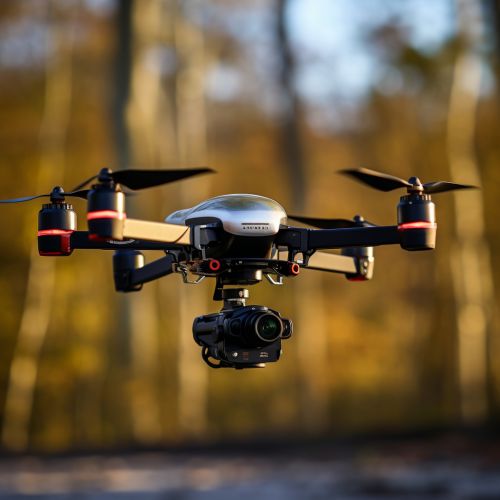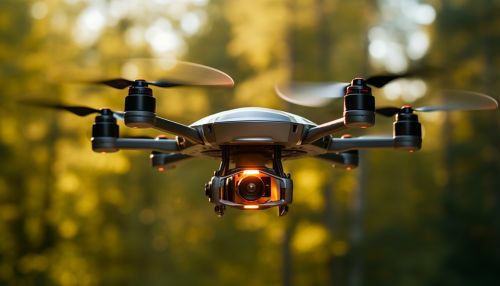Camera Drone
Introduction
A camera drone, also known as an unmanned aerial vehicle (UAV), is a type of unmanned aircraft designed to carry a high-quality camera for aerial photography and videography. Camera drones have revolutionized the field of aerial photography, providing unprecedented access to aerial perspectives and enabling the capture of high-resolution images and videos from the sky.


Design and Components
Camera drones are typically quadcopters, meaning they have four rotors for propulsion and control. The design of a camera drone includes several key components, including the drone body, the camera, the rotors, the propulsion system, the battery, the controller, and the software.
Drone Body
The drone body, or airframe, is the central component of a camera drone. It houses the camera, battery, and other essential components. The drone body is typically made of lightweight materials such as plastic or carbon fiber to reduce weight and increase flight time.
Camera
The camera is the most critical component of a camera drone. It is typically mounted on a gimbal, a pivoted support that allows the rotation of the camera on a single axis. This ensures that the camera remains stable during flight, allowing for smooth, high-quality footage.
Rotors
The rotors are crucial for the drone's flight. They provide lift and control the drone's movement. Each rotor consists of a motor and a propeller, and the speed of the rotors can be adjusted individually to control the drone's direction and altitude.
Propulsion System
The propulsion system of a camera drone includes the motors and the propellers. The motors are typically electric and powered by the drone's battery. The propellers are designed to generate lift when the motors spin them at high speed.
Battery
The battery provides power to the drone's motors and other electronic components. Most camera drones use lithium polymer (LiPo) batteries due to their high energy density and rechargeability.
Controller
The controller is used to pilot the drone. It communicates with the drone via radio signals, allowing the pilot to control the drone's movement and camera.
Software
The software is responsible for controlling the drone's flight and camera. It includes the drone's flight controller software, which manages the drone's movement, and the camera software, which controls the camera's settings and functions.
Applications
Camera drones have a wide range of applications, from recreational use to professional photography and videography, to industrial and commercial use.
Recreational Use
Recreational users often use camera drones for aerial photography and videography. They can capture stunning aerial views of landscapes, events, and more.
Professional Photography and Videography
Professional photographers and videographers use camera drones to capture unique perspectives and high-quality aerial footage. This can include landscape photography, event photography, real estate photography, and more.
Industrial and Commercial Use
In the industrial and commercial sectors, camera drones are used for tasks such as inspections, surveillance, and mapping. They can provide high-resolution images and videos of hard-to-reach or dangerous areas, making them a valuable tool for industries such as construction, agriculture, and energy.
Regulations
The use of camera drones is regulated by various laws and regulations, which vary by country. These regulations often require drone pilots to obtain a license or permit, and they may restrict where and when drones can be flown.
Future Developments
The field of camera drones is continually evolving, with new advancements in technology leading to improved drone performance, camera quality, and software capabilities. Future developments may include increased flight times, improved image stabilization, and advancements in autonomous flight technology.
